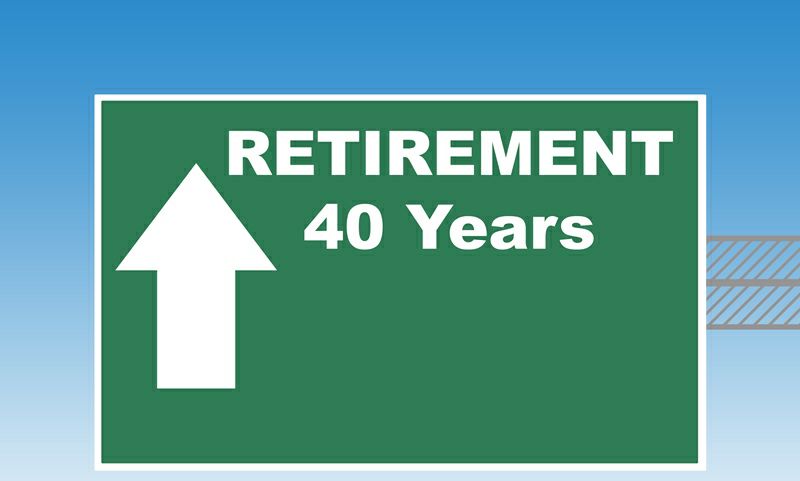It is most people’s biggest savings fund but the majority of Irish over-50s have a startling lack of knowledge about their pension, writes Mark Channing.
A report by the Economic and Social Research Institute found that over two-thirds of pension scheme members aged over 50 don’t know much their pension is likely to be, or even how will be paid to them when they retire.
ESRI called the lack of pension knowledge ‘striking’ and said the information gap left retirement savers at risk of mismanaging their pension funds.
“Pensions are complex so the question arises as to whether or not people are well-placed to make good decisions about their pension savings,” the report authors stated.
With building a pension taking a lifetime’s work, here’s some counsel for whatever stage in the pension lifecycle you’re at.
Your 20s
The earlier your start your pension the bigger pension pot to play with when you retire, making it vital to get into the pensions savings habit in your 20s. Obvious advice perhaps, but the average person doesn’t start their pension until they are 37, according to Irish Life.
Due to compounding effects, the delay can have a massive impact on what you end up with in retirement. For example, start saving €150 a month at the age of 25 and your pension pot would be worth about €300,000 at 65, assuming investment growth of 6% a year, after charges.
Wait until you are 45 to start and the pot would be worth just under €70,000, assuming the same monthly contribution and investment return. The importance of starting early also means twentysomethings entering employment should not solely focus on base salary when weighing up job offers.
Danny Mansergh, head of member communications at Mercer, observes: “If choosing between a job that pays a higher salary with no employer pension and one that pays a lower salary but with a generous pension, the job with the pension could be the one to take.”
Your 30s And 40s
Having hopefully started your pension, your 30s and 40s is the growth phase for your fund, which will typically be heavily invested in equities. Although high-risk, equities have consistently proven to be the asset class that pays the highest return over long time periods.
According to Mansergh, most types of pension schemes have a default fund aimed at generating growth when you are young. Opting for this allows you to concentrate on making sure you’re contributing enough, rather than worrying about what to invest in. “There’ll certainly be thrills and spills in the market along the way, but really there’s not a lot you can do about that,” says Mansergh. That said, experts advise keeping a weather eye on your fund throughout.
Jerry Moriarty, CEO of the Irish Association of Pension Funds, points out: “The annual benefit statements you get from your pension provider give you lots of useful information on what you might expect to receive at retirement, and whether you need to be saving more.” Despite this, over 70% of pension savers admitted to not reading their annual pension statement, according to Standard Life.
Your 50s And 60s
In your 50s and 60s you should gradually rebalance the weight of your pension fund away from equities in favour of less risky assets. You may not actively need to do this, as most employer schemes use a process called ‘lifestyling’, which automatically invests your money in lower-risk investments the closer you get to retirement. What you do need to do is to take the time to work out what your retirement is likely going to look like, given how much you’ve saved.
According to John Tuohy, CEO of Acuvest, a specialist provider of investment services: “This is really the time to sit down and make a financial plan. You need to do it 10 or 11 years before you retire, which gives you time to move some of the deck chairs if need be. Don’t wait until the year before you finish work because by then it will be too late.”
Retirement
After giving yourself a pat on the back for making it this far, one of your first retirement projects is to decide how much of your pension to take as a lump sum. How your lump sum is taxed will help inform your decision. The first €200,000 of pension lump sums is tax-free, while lump sums between €200,001 and €575,000 are taxed at 20%. Lump sums above this are taxed at your marginal rate and subject to the Universal Social Charge.
For people in defined contribution schemes, which are the most common pension arrangement in Ireland, the next choice will be whether to use your pension fund to buy an annuity or keep it invested via an Approved Retirement Fund (ARF). ARFs allow you keep control of your pension and how it’s invested. An annuity on the other hand pays you a guaranteed income for life. Each option has its pros and cons. While an ARF gives you control, you risk running out of money before you die if you manage the fund badly.
With an annuity, you won’t run out of money, but you could find that it pays you a low annual income. Annuities rates are directly related to interest rates, so in today’s low interest rate world they usually only pay a meagre income. There’s also another problem. When you die, an annuity dies with you (unless you purchase a pricier joint annuity that passes to your spouse). On the other hand, any proceeds that are left over in an ARF can be passed on to loved ones.
“An annuity is a pretty expensive thing to buy today, so today’s retirees might be better advised to choose the ARF option,” says Tuohy. “This may end up producing a better retirement income while still leaving the option open to buy an annuity later. It’s just one of the many reasons why getting advice is so important.”








